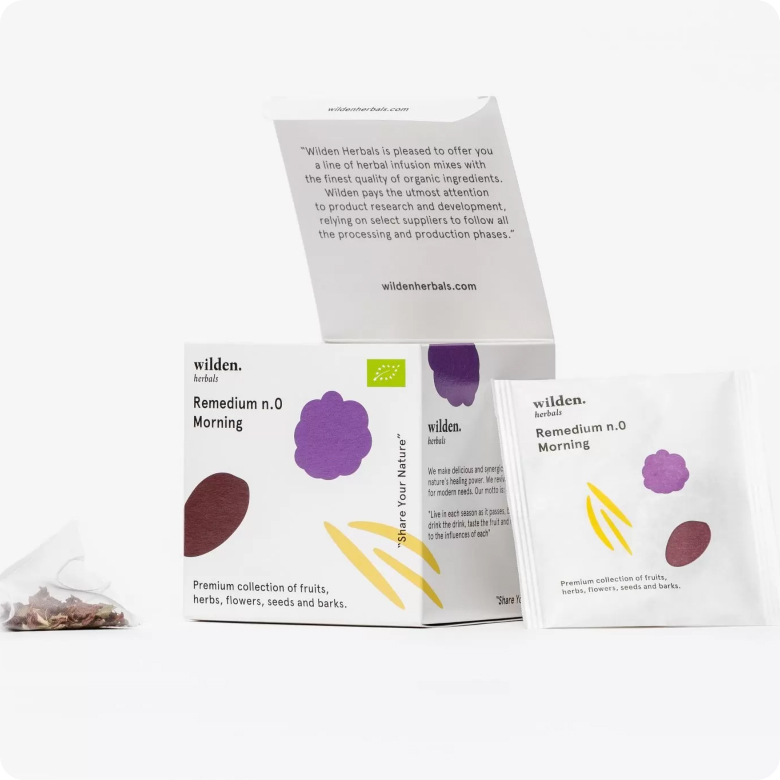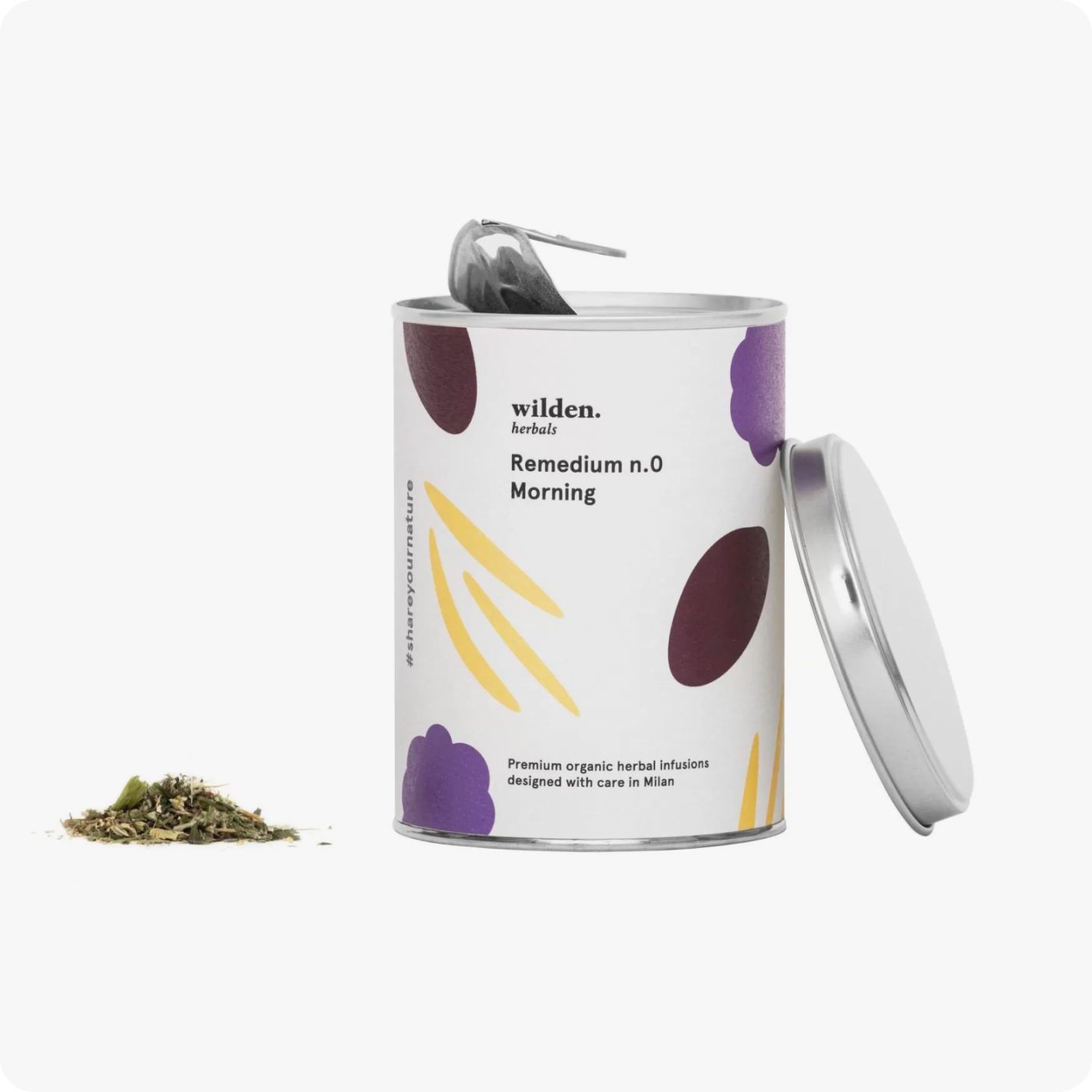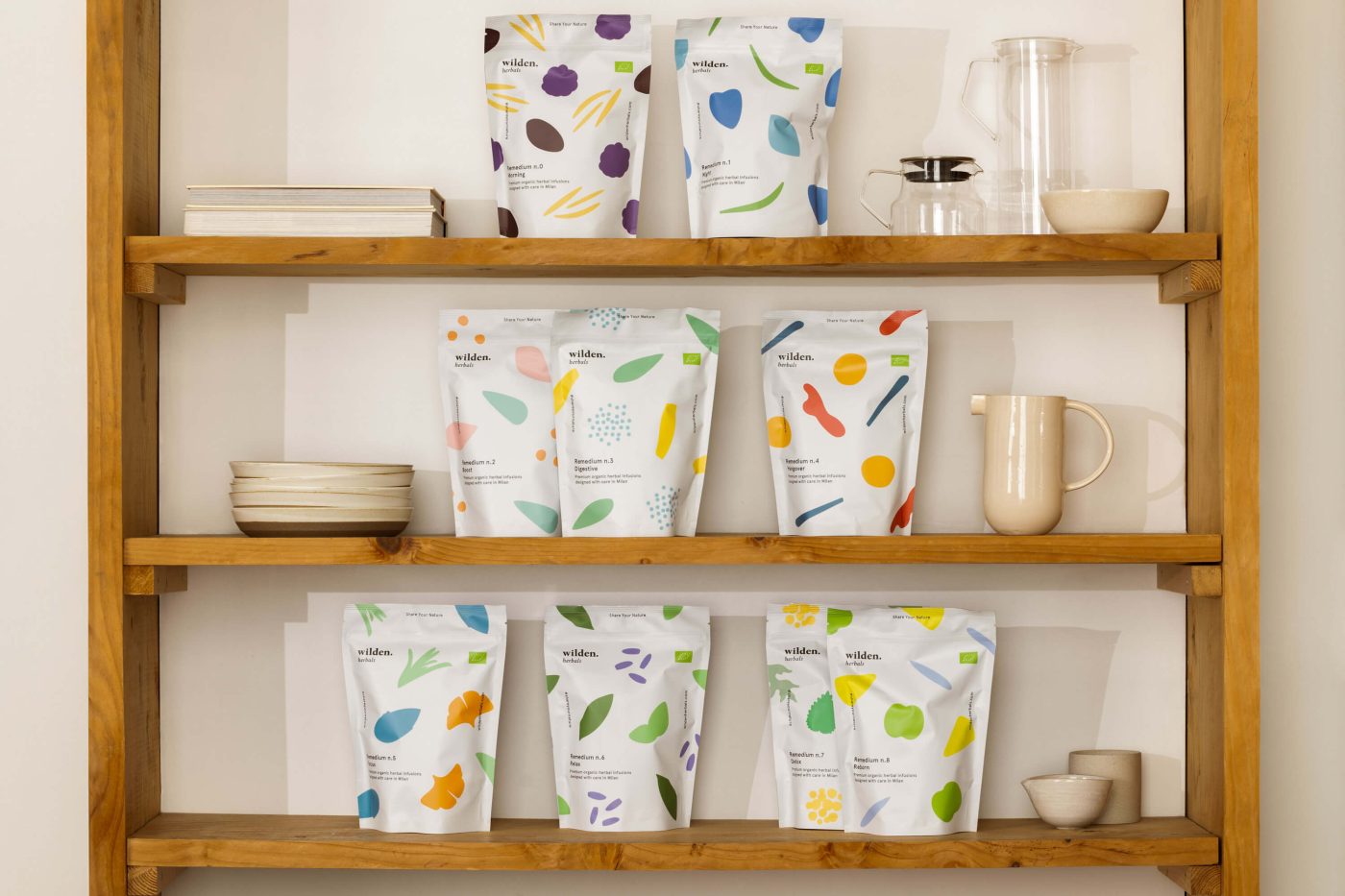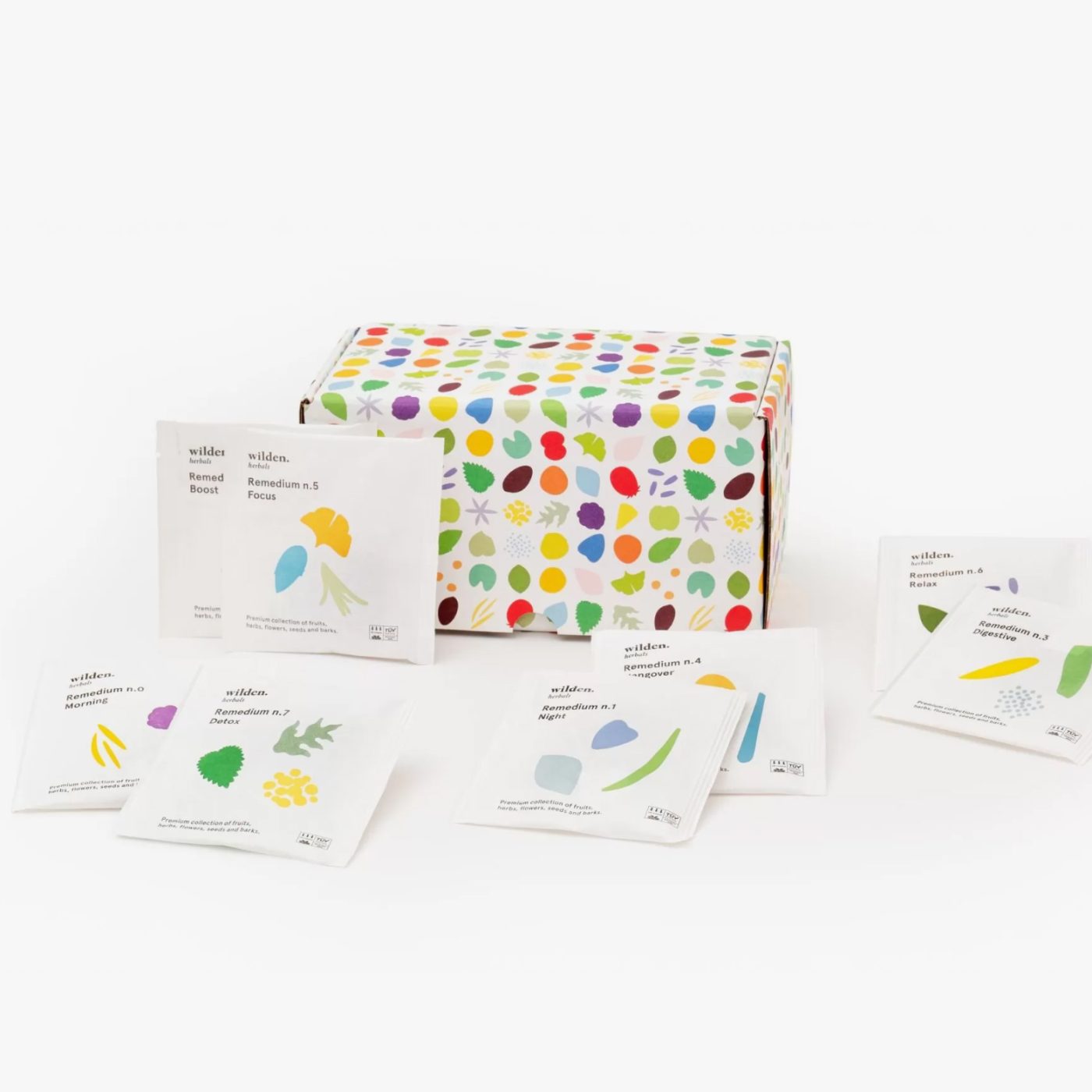Remedium No. 3 – Digestive
From composition to benefits, Wilden.herbals chronicles its herbal teas one by one on a journey to discover the power of plants.
Remedium No. 3 – Digestive is a fresh and light-tasting herbal tea to be enjoyed after every meal, as it aids digestion and reconciles a proper intestinal cycle.
8 classic botanicals that marry and balance each other, acting in synergy. The fresh and intense taste of lemon, mint and ginger stands out, which is enhanced by licorice and rosemary; sage, lemon balm and fennel close the circle of flavors with a sweet and delicate aftertaste, and add a beneficial and protective effect for the liver.

Fennel, Foeniculum dulce
Lemon, Citrus limon
Licorice, Glycyrrhiza glabra
Lemon balm, Melissa officinalis
Mint, Mentha x piperita
Rosemary, Rosmarinus officinalis
Sage, Salvia officinalis
Ginger, Zingiber officinale
This is the composition per 100g:
Fennel, Foeniculum dulce
Fennel, commonly known as Wild Fennel, is a Mediterranean plant with Middle Eastern origins and renowned aromatic and phytotherapeutic properties. The seeds, rich in anethole, potassium and vitamin C, are beloved for their carminative properties, aiding in the elimination and reduction of intestinal gas; among their many merits, digestive, stimulant and diuretic properties stand out. Using the seeds in infusion releases its aromas and releases its active ingredients.

Lemon, Citrus limon
Lemon, the fruit of Citrus limon, has uncertain origins but has been appreciated throughout the world for millennia and boasts wide therapeutic as well as dietary use. Lemon is rich in vitamin C and mineral salts and has a wide range of therapeutic and nutritional properties, bringing great benefits to the circulation, digestive, and respiratory systems. The infused peel releases all its aromas enhancing digestive and astringent properties.
Licorice, Glycyrrhiza glabra
Licorice, a plant of Asian origin and typical of the Mediterranean, plays a primary role in Chinese medicine and has been used for thousands of years for its digestive, diuretic, depurative and anti-inflammatory properties. It owes its benefits in particular to Glycyrrhizin, an active ingredient with strong benefits for the circulatory system; the infused root is renowned for easing intestinal disorders, protecting mucous membranes, promoting digestion and liver function.
Lemon balm, Melissa officinalis
Lemon balm, also known as Cedronella, lemon grass, or lemon grass, is traditionally used in herbal medicine against nervous excitement. Lemon balm excelled in the gardens of Benedictine monasteries and formed part of the composition of one of their famous liqueurs, the elixir of long life.” The pleasant aroma and flavor of lemon are due to the presence of essential oil in the leaves, which are employed in anxiety states with somatizations affecting the gastrointestinal system.
Mint, Mentha x piperita
Peppermint, a variety of the genus Mentha, is a plant of European origin now cultivated and appreciated worldwide; rich in enzymes and flavonoids, it owes most of its beneficial properties to Menthol. Mint, already appreciated in ancient times by the Egyptians and Greeks, promotes respiration, invigorates the nervous system, aids digestion, protects the liver and intestines, and alleviates symptoms of flu, colds and diarrhea. The infused leaves release all the aromas and essences with their characteristic flavor, promoting proper digestion and leaving a pleasant sensation of freshness.

Rosemary, Rosmarinus officinalis
Rosemary is a classic plant of Mediterranean culture that has been valued for centuries for its balsamic and medicinal properties; in medieval culture it is attributed magical properties, making it suitable for a variety of uses and applications. Rosemary, rich in sodium, flavonoids and essential oils, has beneficial properties mainly for the digestive and circulatory systems. In infusion it aids digestion, has astringent power, and promotes liver function.

Sage, Salvia officinalis
Salvia, a typical plant of Southern Europe, owes its name to the Latin verb “to save” and was considered sacred by the ancient Romans; it has a variety of uses in European folk traditions, traditional Chinese medicine and Ayurvedic practices. Sage is rich in phenolic acids and flavonoids with pronounced estrogenic and antispastic properties useful in relieving menstrual disorders and aiding digestion. When infused, it is a natural relaxant, recommended after meals for its stomach and intestinal benefits.
Ginger, Zingiber officinale
The rhizome of this plant native to the tropical forests of India and Southeast Asia is widely used both as a spice and as a traditional remedy. The active ingredients it contains (gingerols) make ginger an effective antioxidant against inflammation, congestion, coughs, colds and fevers. In traditional Chinese medicine it performs an action called “dispersing the cold” accumulated in the body.
The balance on which Remedium No. 3 – Digestive stands is due to its composition: balanced, beneficial, this natural remedy is a digestive aid to keep on hand, but it is so much more. It is a blend of plants and spices capable of restoring the ancient glow and energizing your day. Of course.
© 2021 Wilden.herbals – Contents are the property of Wilden.herbals S.r.l., reproduction is prohibited
Sources:
- Wagner, H., & Ulrich-Merzenich, G. (2013). Evidence and rational based research on Chinese drugs. Wien: Springer.
- Phytotherapy, rational use of plant drugs, F. Capasso G. Grandolini A.A. Izzo Springer
- Bates SH, Jones RB, Bailey CJ, Insulin-like effect of pinitol, British Journal of Pharmacology 2000; 130(8): 1944-1948
- Kamara BI, et al, Polyphenols from honeybush tea, Journal Agricultural Food Chemistry 2003; 51(13): 3874-3879
- Kenneth M. Klemow, Andrew Bartlow and Justin Crawford, Herbal Medicine: Biomolecular and Clinical Aspects.
- Barnes Joan, Anderson A. Linda, Phillipson David J. Herbal Medicines, Pharmaceutical Press 2007.
- Blumenthal M., Goldberg A., Brinckmann J (Ed). Expanded Commission E Monographs, American Botanical Council and Integrative Medicine Communications 2000.
- European Scientific Cooperative on Phytotherapy (Ed). Melissae folium, ESCOP Monographs on the Medicinal Uses of Plants Drugs, Centre for Complementary Health Studies, Université d’Exeter 1996.
- Franchomme P. et Pénoël D. L’aromathérapie exactement. Encyclopédie de l’utilisation thérapeutique des huiles essentielles. (Aromatherapy exactly. Encyclopedia of the therapeutic use of essential oils).
- Roger Jollois Éditeur 1990 Pizzorno JE Jr, Murray Michael T (Ed). Textbook of Natural Medicine, Churchill Livingstone 2006
- Organisation mondiale de la santé (World Health Organization). WHO monographs on selected medicinal plants, vol. 2, Suisse, 2002










